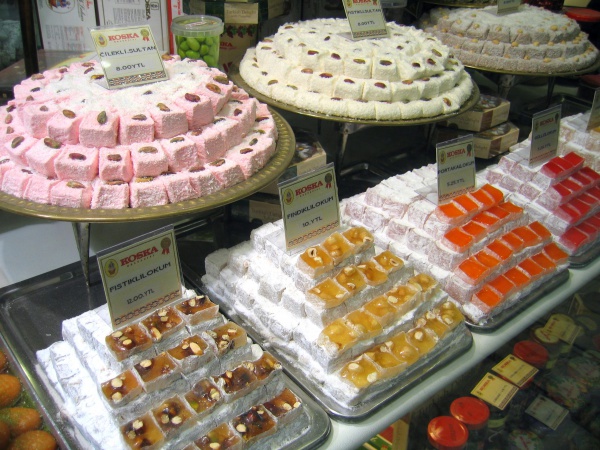Facts About Turkish delight
Turkish delight, or lokum as it is traditionally known, is a sweet delicacy crafted from a blend of starch and sugar. The more luxurious varieties often include chopped nuts such as pistachios, hazelnuts, or walnuts, and are flavored with exquisite ingredients like rosewater, mastic, bergamot orange, or lemon. These delightful morsels are typically served in small, powdered sugar-coated cubes and sometimes boast flavors like cinnamon or mint. An intriguing ingredient, soapwort, is occasionally used to ensure a smooth mixture.
The precise origins of Turkish delight remain somewhat enigmatic, but it is widely believed to have first been created in Turkey during the late 1700s. The name "lokum" derives from the Arabic word "al-lukum" meaning "throat comfort." It is closely associated with Hacı Bekir, who opened a confectionery shop in Constantinople in 1777 and produced various sweets, including lokum. However, some historians contend that similar recipes existed in Arab and Persian cuisines prior to Hacı Bekir's era.
"Lokum" is known by different names in various languages, reflecting its widespread appeal. In English, it was once referred to as "Lumps of Delight." Today, Turkish delight is savored globally, with local variations found in countries such as Bulgaria, Greece, Romania, Moldova, the former Yugoslavia, North America, Brazil, the UK, and other Commonwealth nations. In Cyprus, it enjoys special recognition under the name "Loukoumi Geroskipou."
This sweet treat has also inspired related products like gourmet perfumes and holds a special place in popular culture. For instance, in C.S. Lewis's classic novel "The Lion, the Witch and the Wardrobe" Turkish delight is the favorite sweet of the character Edmund Pevensie. The release of the book's film adaptation led to a surge in Turkish delight sales, thanks to its memorable role in the story.

 Jordan
Jordan